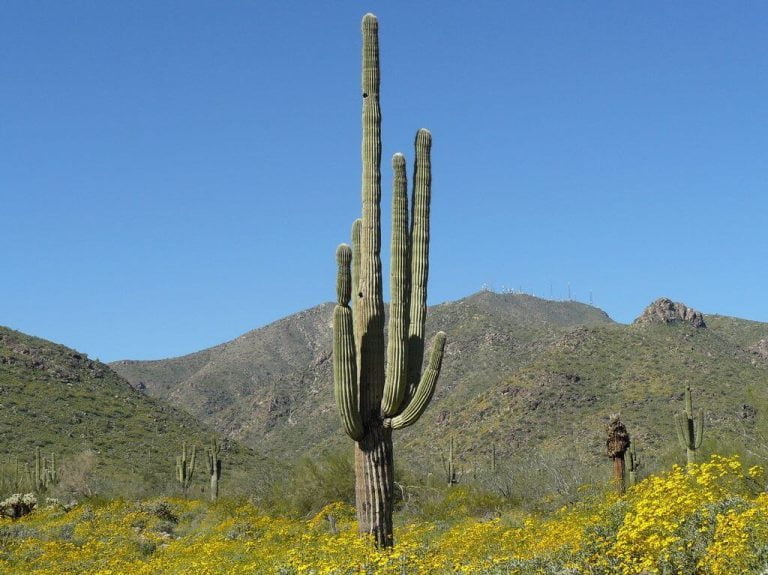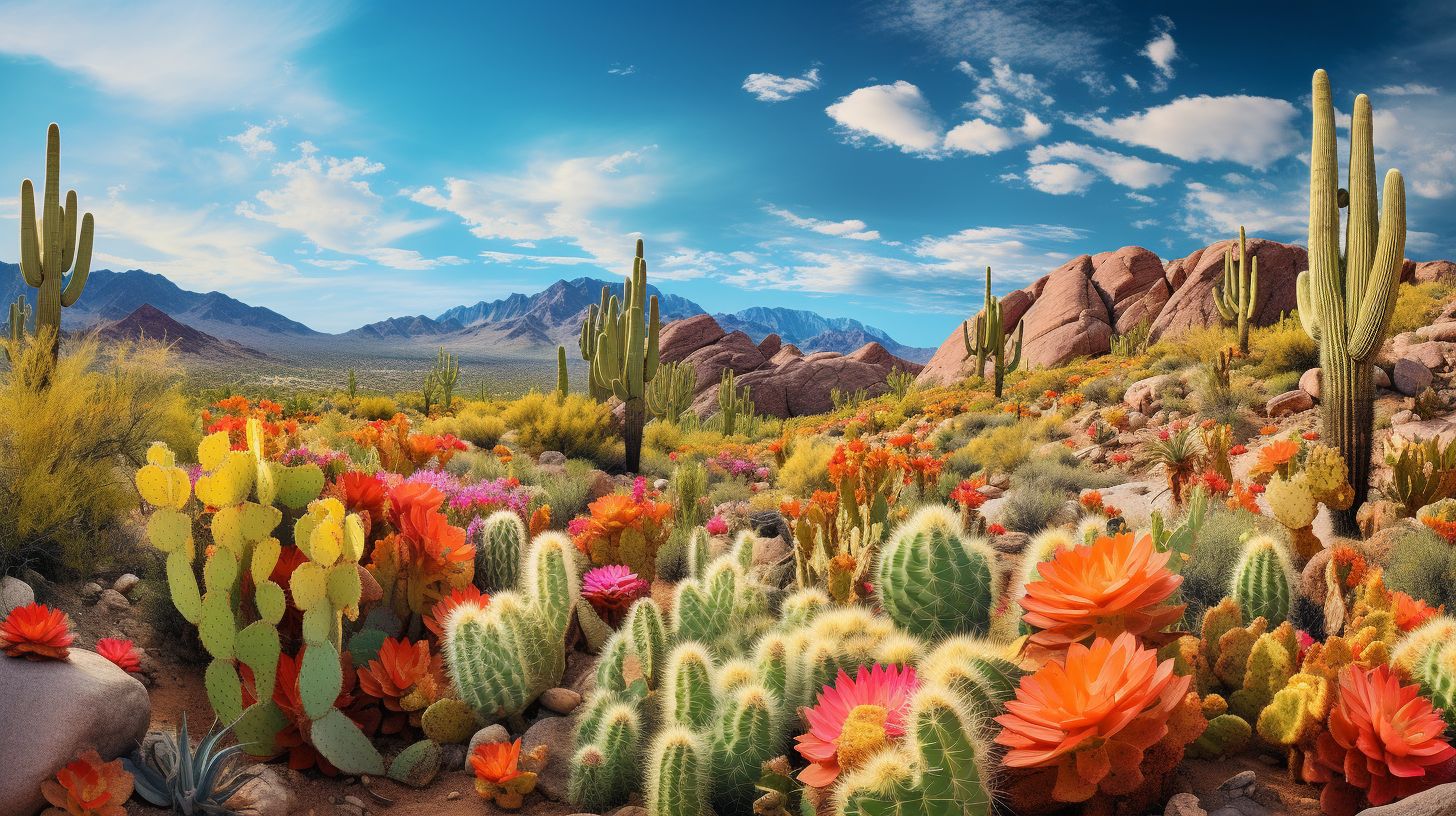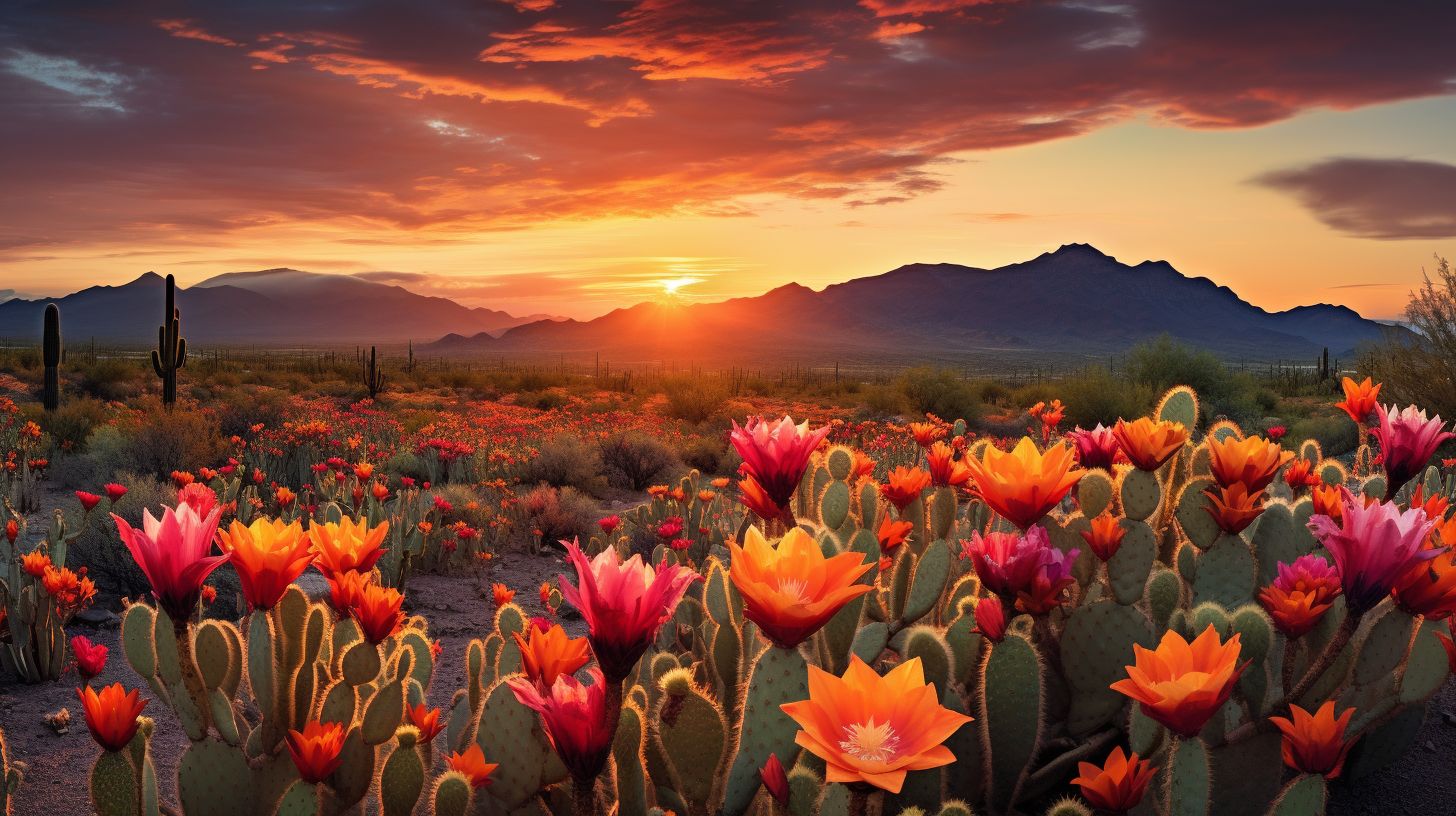
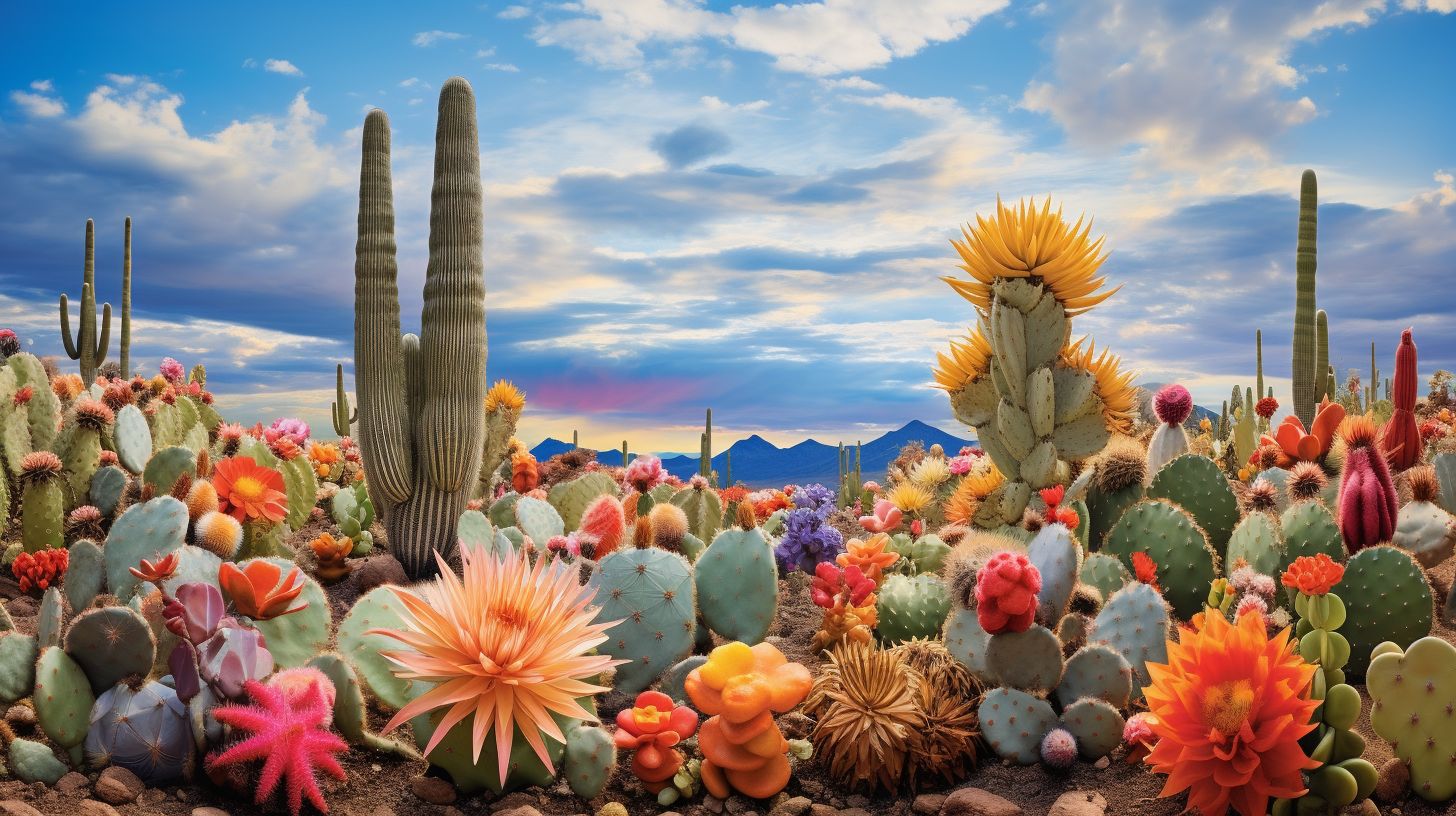
Arizona Cactus – Arizona, fondly known as the ‘Grand Canyon State’, is home to more than just its legendary gorges. With a whopping more than 50 species of cacti, it’s a prickly wonderland that we’ve grown quite smitten with and are now thrilled to share about! From the stately saguaro standing tall for centuries, to the petite pincushion taking refuge amongst rocky slopes – each one contributes uniquely to this arid landscape’s allure.
So why not join us in exploring Arizona’s spiky sights through our guide below? Get ready for an adventurous sojourn through thorny trails packed with personality!
Key Takeaways
- Arizona is home to over 50 species of cacti, including the iconic saguaro, barrel, prickly pear, cholla, organ pipe, fishhook, hedgehog, pincushion, beavertail, and agave cactus.
- Cacti in Arizona have unique adaptations that allow them to survive in harsh desert conditions such as extreme summer temperatures and water storage capabilities.
- Arizona’s cacti play a crucial role in the ecosystem by providing shelter and food for animals and contributing to pollination and seed dispersal. They also hold cultural significance for Native American tribes.
Common Cactus Species in Arizona
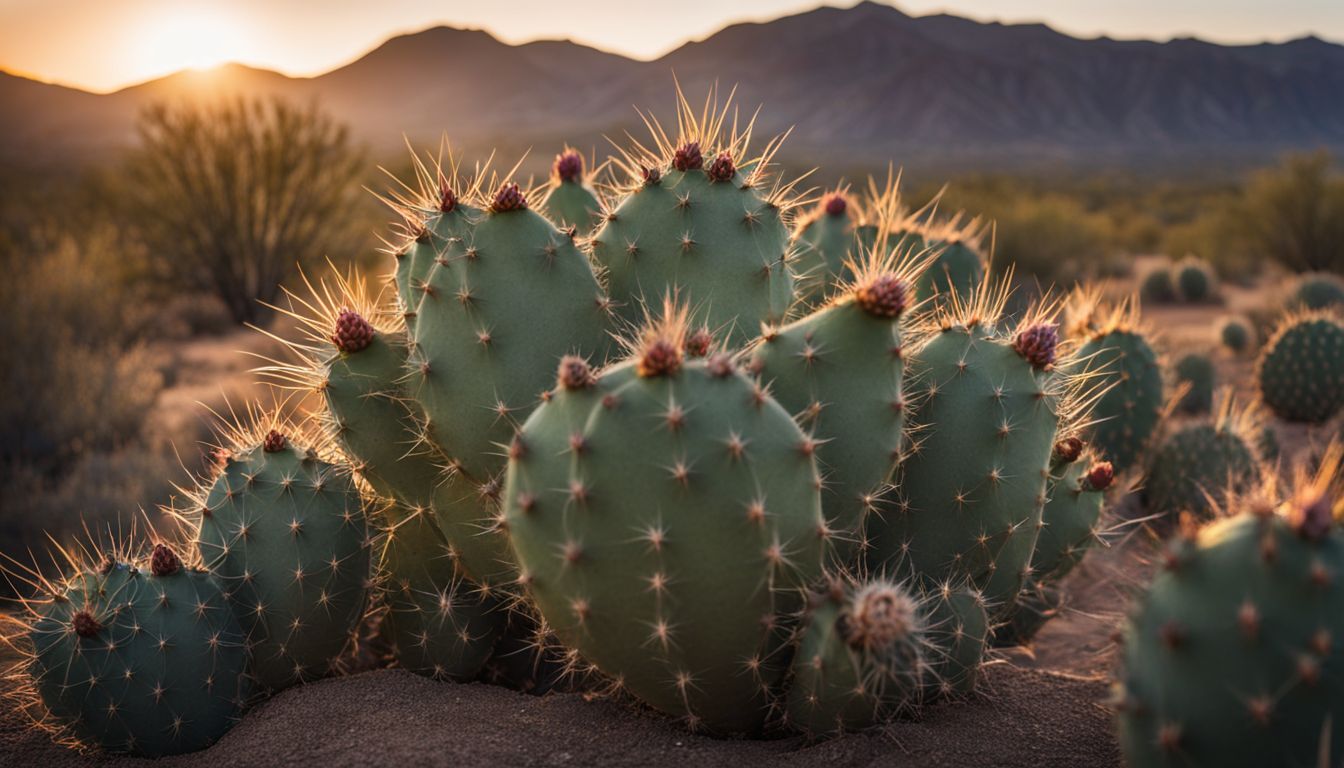
In Arizona, you can find a variety of common cactus species including the majestic Saguaro Cactus, the unique Barrel Cactus, the vibrant Prickly Pear Cactus, and many more.
Arizona Cactus: Saguaro Cactus
We love sharing all about the giant saguaro cactus! This tall plant holds a lot of water. It can grow over 40 feet high and live up to 200 years. Wow, that’s old! This cool cactus only lives in our Sonoran Desert.
It is one of the things that makes our desert special. The saguaro also helps many animals by giving them homes and food to eat.
Arizona Cactus: Barrel Cactus
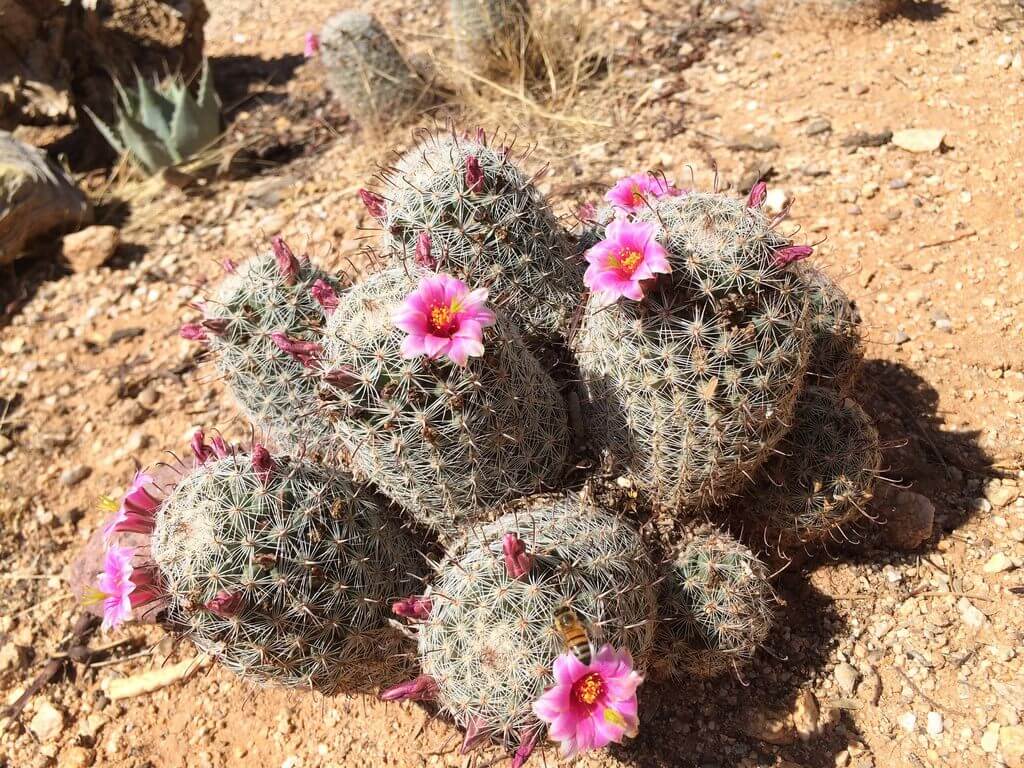
| Echinocactus grusonii | |
|---|---|
| Conservation status | Endangered (IUCN 3.1)[1] |
| Scientific classification | Kingdom: Plantae Clade: Tracheophytes Clade: Angiosperms Clade: Eudicots Order: Caryophyllales Family: Cactaceae Subfamily: Cactoideae Genus: Echinocactus Species: E. grusonii Binomial name: Echinocactus grusonii Hildm. |
You will find the barrel cactus in south-central Arizona and northern Sonora, Mexico. Its name comes from its shape. This cactus stands out with sharp spines that look like fishhooks.
Sometimes, it grows on rocky slopes.
Some people call this plant “Ferocactus wislizeni”. It catches your eye with its golden spines. The barrel cactus does a lot of good too. Animals eat it for food and drink its water.
People use it to heal sick bodies or to make their yards look nice.
Arizona Cactus: Prickly Pear Cactus
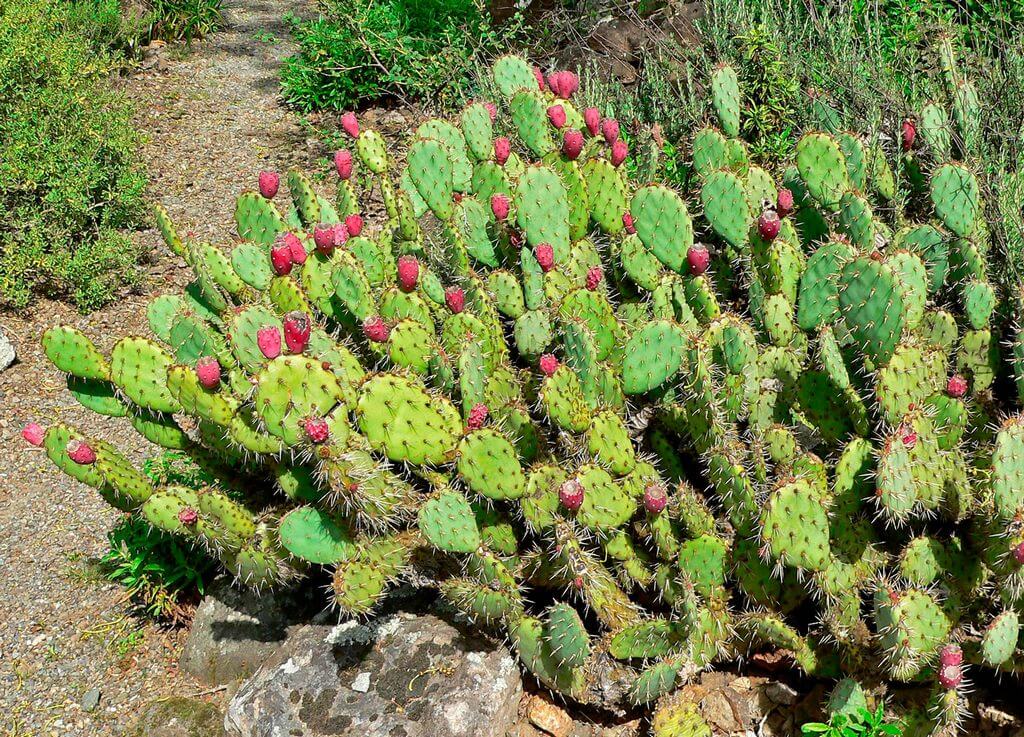
| Scientific Classification | |
|---|---|
| Kingdom: | Plantae |
| Clade: | Tracheophytes |
| Clade: | Angiosperms |
| Clade: | Eudicots |
| Order: | Caryophyllales |
| Family: | Cactaceae |
| Subfamily: | Opuntioideae |
| Tribe: | Opuntieae |
| Genus: | Opuntia Mill. |
| Species |
|---|
| Many, see text. |
| Synonyms |
|---|
| Chaffeyopuntia Frič & Schelle |
| Ficindica St.-Lag. |
| Nopalea Salm-Dyck |
| Phyllarthus Neck. ex M.Gómez (nom. inval.) |
| Salmiopuntia Frič (nom. inval.) |
| Tunas Lunell |
The Prickly Pear Cactus is a sight to see in Arizona. This cactus grows pads on top of each other, creating a unique look. Its real name is Opuntia engelmannii, but most people call it the Engelmann prickly pear.
It comes from the Sonoran Desert area of our home state. Many people like to grow this cactus in their gardens or homes because it’s so cool to look at. Plus, it adds a touch of desert charm wherever it goes!
Arizona Cactus: Cholla Cactus
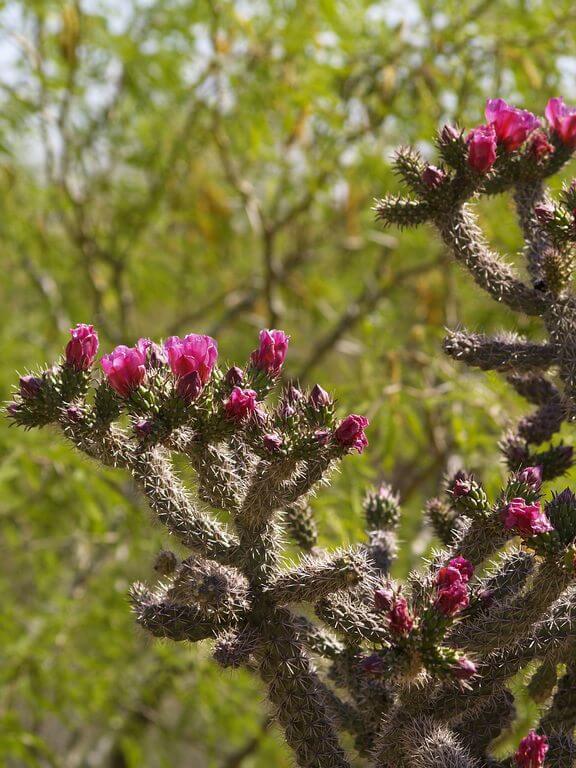
| Scientific Classification | |
|---|---|
| Kingdom: | Plantae |
| Clade: | Tracheophytes |
| Clade: | Angiosperms |
| Clade: | Eudicots |
| Order: | Caryophyllales |
| Family: | Cactaceae |
| Subfamily: | Opuntioideae |
| Tribe: | Cylindropuntieae |
| Genus: | Cylindropuntia (Engelm.) F.M.Knuth |
| Species |
|---|
| See text. |
| Synonyms |
|---|
| Opuntia (Cylindropuntia) Engelm. |
| Grusonia (Cylindropuntia) (Engelm.) G.D.Rowley |
The Cholla cactus is a common sight in Arizona’s Sonoran Desert. Also known as the buckhorn cholla, this cactus stands out with its cylindrical shape and spiny branches. Like other cacti species in Arizona, the Cholla cactus has adapted to thrive in arid desert conditions.
It can be found for sale in nurseries and is often used for landscaping purposes. With its unique appearance and ability to withstand harsh environments, the Cholla cactus adds beauty and resilience to the desert landscape of Arizona.
Arizona Cactus: Organ Pipe Cactus
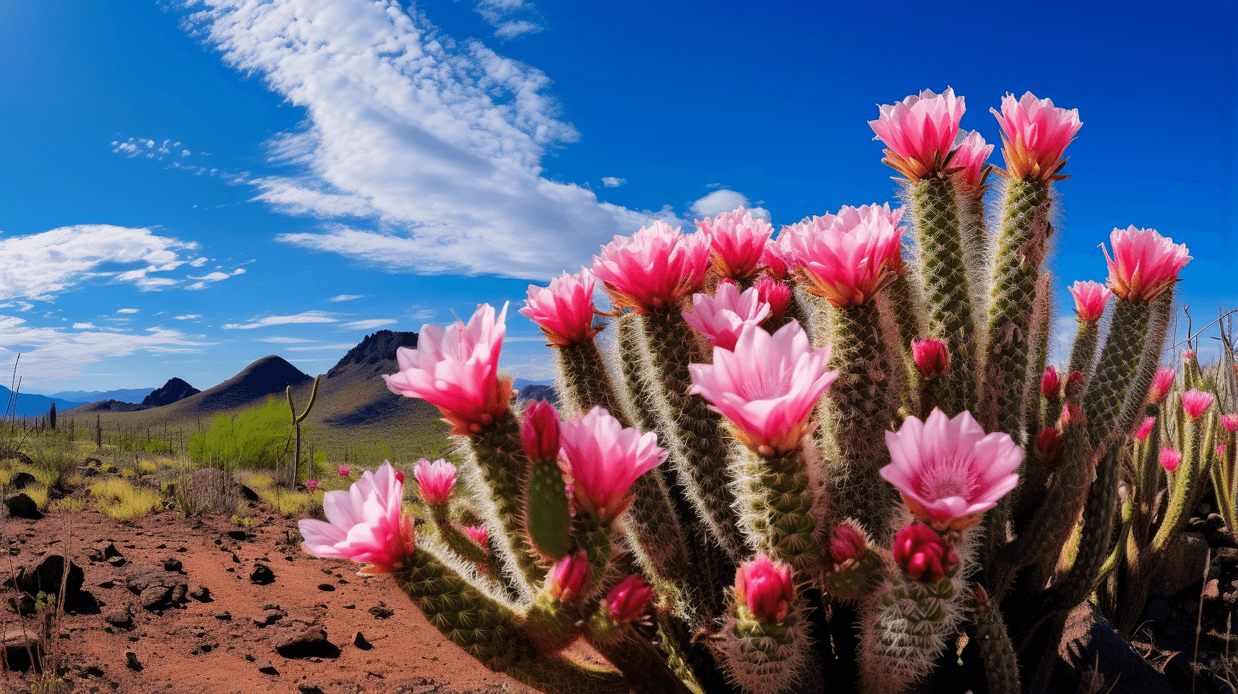
| Conservation Status |
|---|
| Least Concern (IUCN 3.1)[1] |
| Scientific Classification | |
|---|---|
| Kingdom: | Plantae |
| Clade: | Tracheophytes |
| Clade: | Angiosperms |
| Clade: | Eudicots |
| Order: | Caryophyllales |
| Family: | Cactaceae |
| Subfamily: | Cactoideae |
| Genus: | Stenocereus |
| Species: | S. thurberi |
| Binomial name: | Stenocereus thurberi (Engelm.) Buxbaum, 1961 |
The Organ Pipe Cactus is one of the many cactus species you can find in Arizona. Scientifically known as Stenocereus thurberi, this cactus gets its name from its slender vertical branches that resemble the tubes of a pipe organ.
It can grow to a height of 15 feet or more and is commonly found in Organ Pipe Cactus National Monument, as well as other desert habitats in central Arizona and northern Sonora. With its unique appearance, the Organ Pipe Cactus adds beauty to the desert landscape of Arizona.
Arizona Cactus: Fishhook Cactus
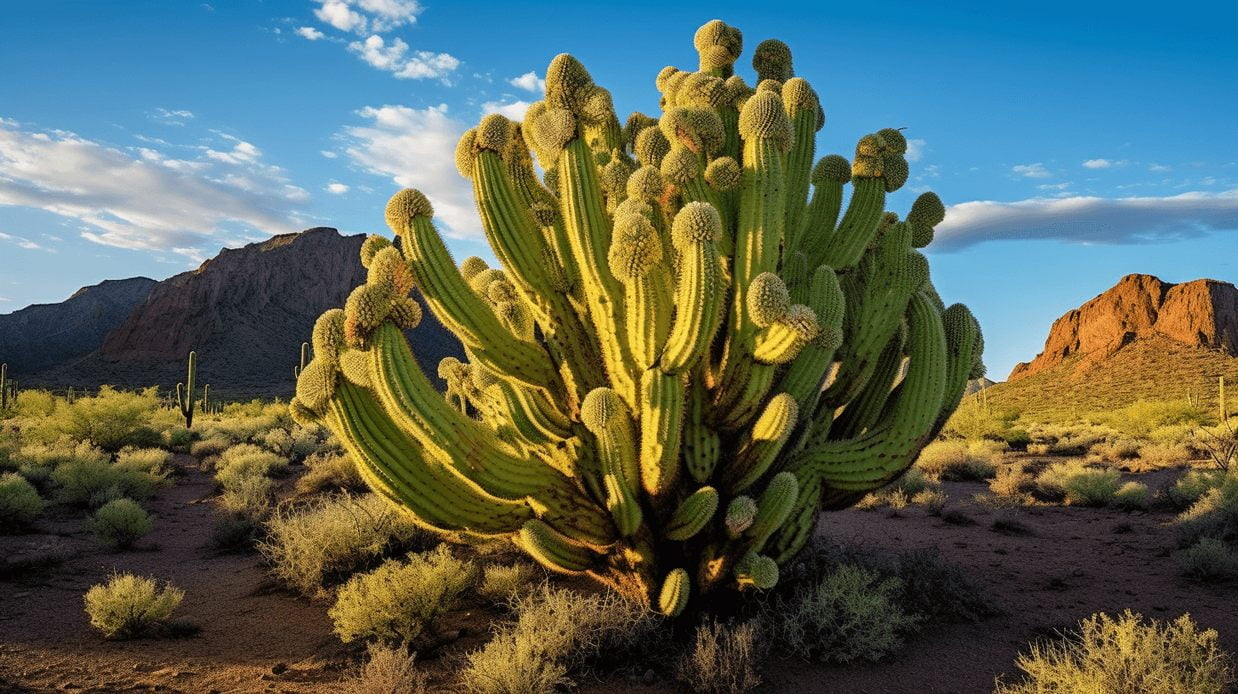
| Scientific Classification | |
|---|---|
| Kingdom: | Plantae |
| Clade: | Tracheophytes |
| Clade: | Angiosperms |
| Clade: | Eudicots |
| Order: | Caryophyllales |
| Family: | Cactaceae |
| Subfamily: | Cactoideae |
| Genus: | Cochemiea |
| Species: | C. tetrancistra |
| Binomial name: | Cochemiea tetrancistra (Engelm.) P.B.Breslin & Majure |
| Synonyms |
|---|
| Mammillaria tetrancistra Engelm |
The Fishhook Cactus is a unique type of cactus found in south-central Arizona, northern Sonora, Mexico, and southern New Mexico. It belongs to the Mammillaria, Echinomastus, or Sclerocactus genera.
This cactus gets its name from its long spines that resemble fish hooks. You can often find it thriving in the hot and dry conditions of the Sonoran Desert. One distinctive feature of this cactus is its bright pink flowers that are arranged decoratively around the crown.
It goes by other names as well, such as Mammillaria grahamii or Mammillaria microcarpa.
Arizona Cactus: Hedgehog Cactus
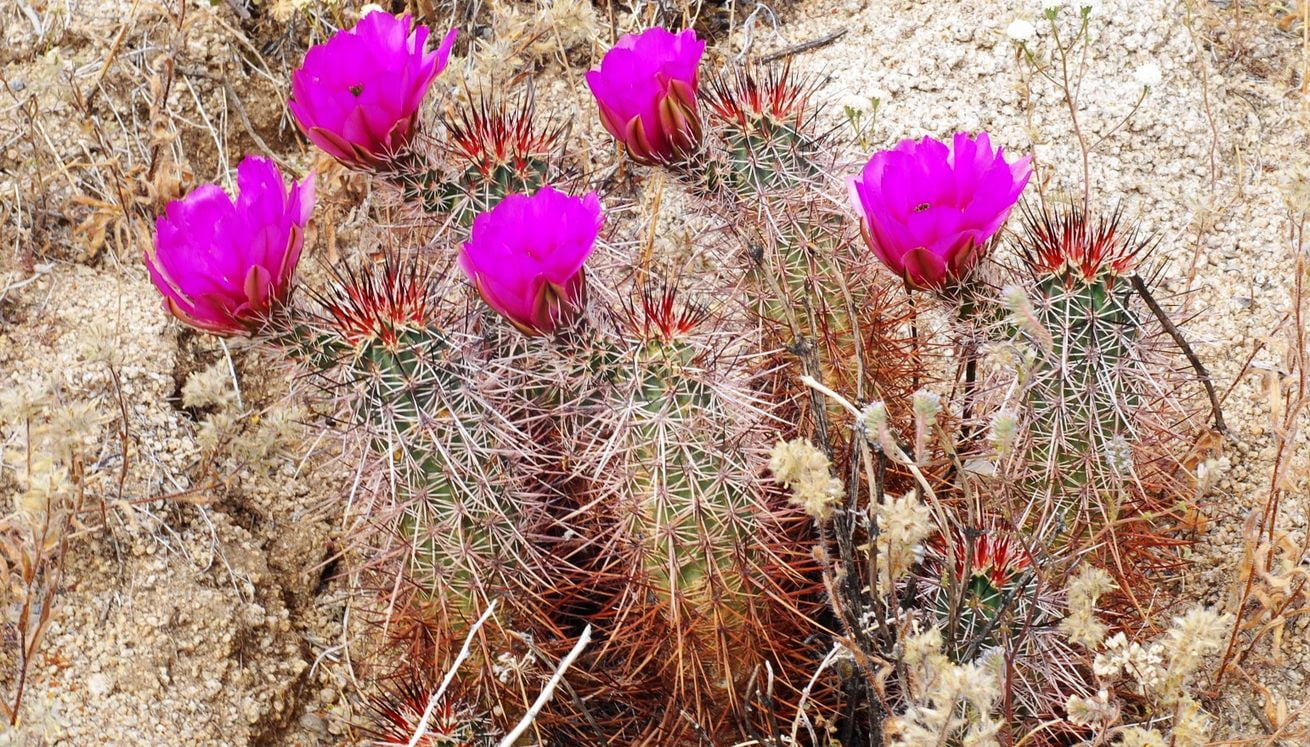
| Taxonavigation |
|---|
| Taxonavigation: Caryophyllales |
| Classification System |
|---|
| Classification System: APG IV |
| Superregnum | Regnum |
|---|---|
| Eukaryota | Plantae |
| Cladus |
|---|
| Angiosperms |
| Cladus |
|---|
| Eudicots |
| Cladus |
|---|
| Core eudicots |
| Ordo | Familia | Subfamilia | Tribus |
|---|---|---|---|
| Caryophyllales | Cactaceae | Cactoideae | Echinocereeae |
| Genus | Sectio | Species |
|---|---|---|
| Echinocereus | E. sect. Costati | Echinocereus stramineus |
The Hedgehog Cactus is a type of cactus found in Arizona. It prefers open habitats and is commonly seen in central Arizona. This dark green succulent plant has large, robust stems.
Another similar species, the Pinkflower Hedgehog Cactus, can also be found in Arizona, as well as New Mexico and Texas.
Arizona Cactus: Pincushion Cactus
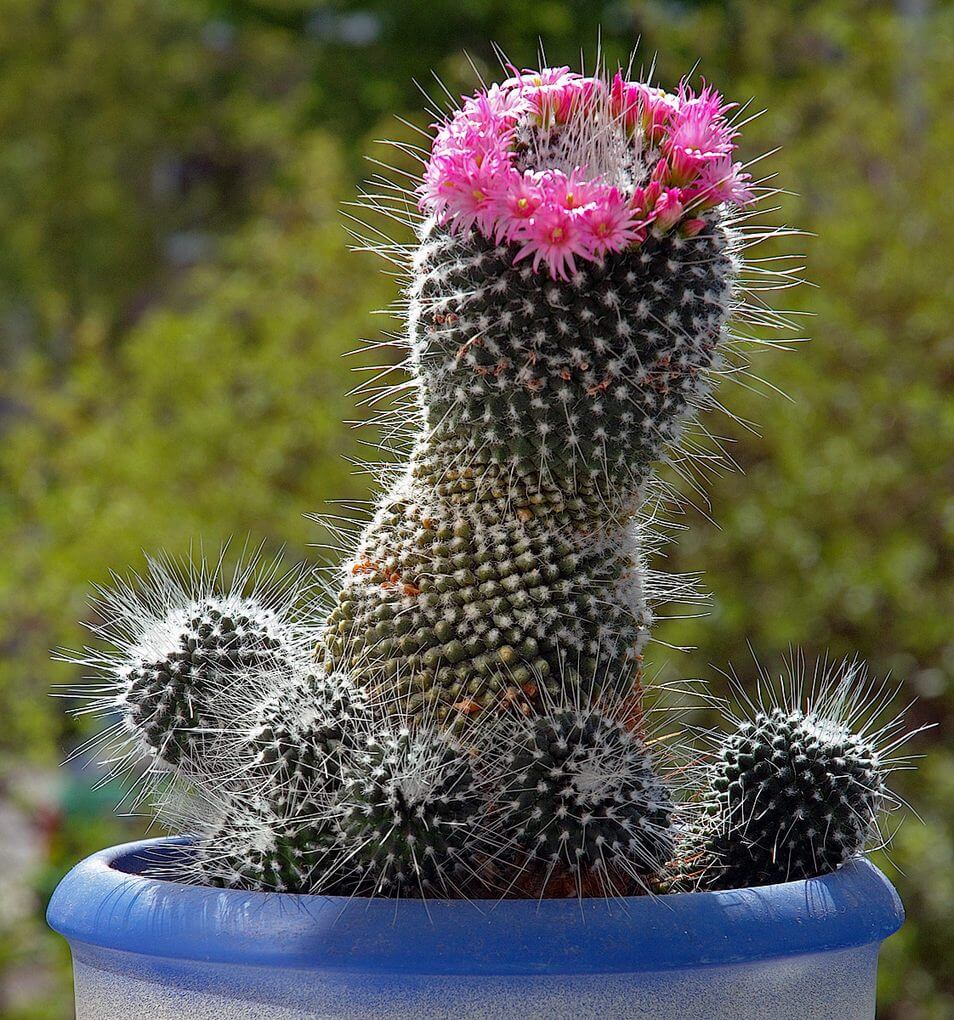
| Scientific Classification | |
|---|---|
| Kingdom: | Plantae |
| Clade: | Tracheophytes |
| Clade: | Angiosperms |
| Clade: | Eudicots |
| Order: | Caryophyllales |
| Family: | Cactaceae |
| Subfamily: | Cactoideae |
| Tribe: | Cacteae |
| Genus: | Mammillaria Haw., nom. cons.[1] |
| Species |
|---|
| About 170 species: see text. |
| Synonyms |
|---|
| Bartschella Britton & Rose |
| Cactus L. |
| Chilita Orcutt |
| Cochemiea (K.Brandegee) Walton |
| Dolichothele (K.Schum.) Britton & Rose |
| Ebnerella Buxb. |
| Haagea Fric |
| Krainzia Backeb. |
| Lactomammillaria Fric (nom. inval.) |
| Leptocladia Buxb. |
| Leptocladodia Buxb. |
| Mamillaria F.Rchb. (orth. var.) |
| Mamillopsis (E.Morren) F.A.C.Weber ex Britton & Rose |
| Mammariella Shafer (nom. inval.) |
| Mammilaria Torr. & A.Gray (orth. var.) |
| Neomammillaria Britton & Rose |
| Oehmea Buxb. |
| Phellosperma Britton & Rose |
| Porfiria Boed. |
| Pseudomammillaria Buxb. |
| Solisia Britton & Rose |
The pincushion cactus, also known as the Cochise pincushion cactus, is a native species found in the Sonoran Desert of southwestern Arizona and Mexico. It is one of the many types of cacti that thrive in this harsh desert environment.
The pincushion cactus shares similar growing conditions with other cacti native to this region. In fact, Arizona is home to over 50 species of cacti, including the pincushion cactus.
This particular species is often referred to as a hedgehog cactus and serves as a symbol for the arid landscapes of Arizona and Mexico.
Arizona Cactus: Beavertail Cactus
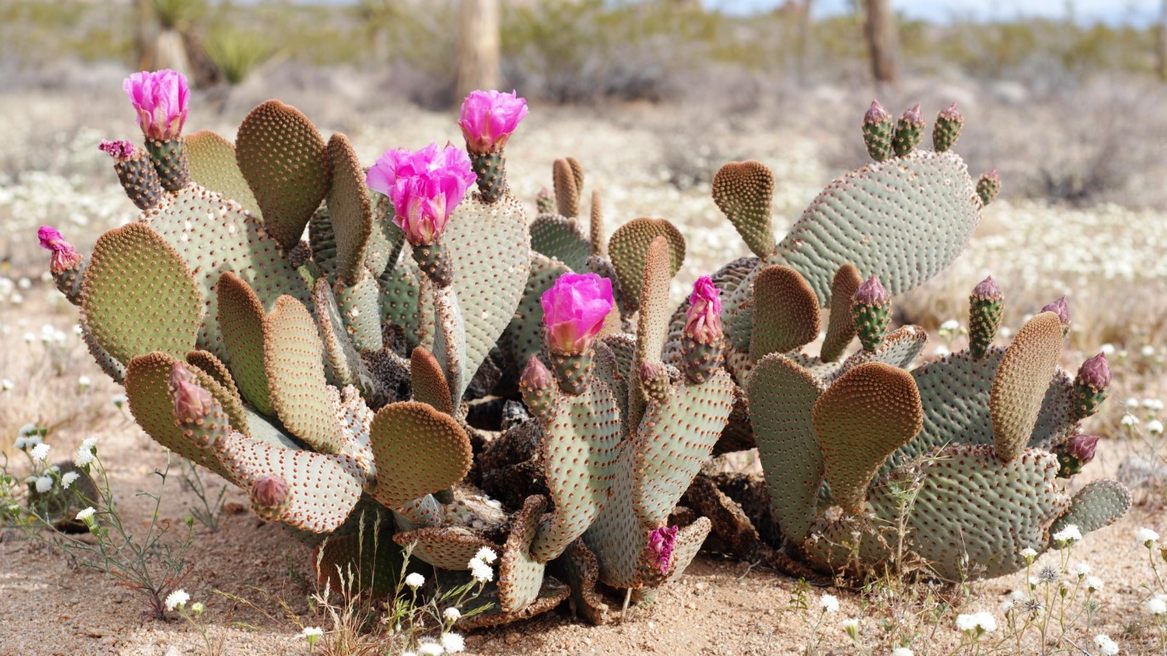
| Conservation Status |
|---|
| Least Concern (IUCN 3.1)[1] |
| Scientific Classification | |
|---|---|
| Kingdom: | Plantae |
| Clade: | Tracheophytes |
| Clade: | Angiosperms |
| Clade: | Eudicots |
| Order: | Caryophyllales |
| Family: | Cactaceae |
| Genus: | Opuntia |
| Species: | O. basilaris |
| Binomial name: | Opuntia basilaris Engelm. & J.M.Bigelow, 1857 |
The beavertail cactus is an interesting type of cactus found in Arizona. It grows in the arid plains of the Mojave, Colorado, and Sonoran deserts. Unlike other cacti, the beavertail cactus is a clumping cactus that forms large groupings with over 50 individual plants.
One unique feature of this cactus is its scarlet red flowers that grow on its pads. Another interesting fact about the beavertail cactus is that it can tolerate cooler climates compared to most other types of cacti.
So if you’re exploring Arizona and come across a cluster of vibrant red flowers, you might just have stumbled upon a beavertail cactus!
Arizona Cactus: Agave Cactus
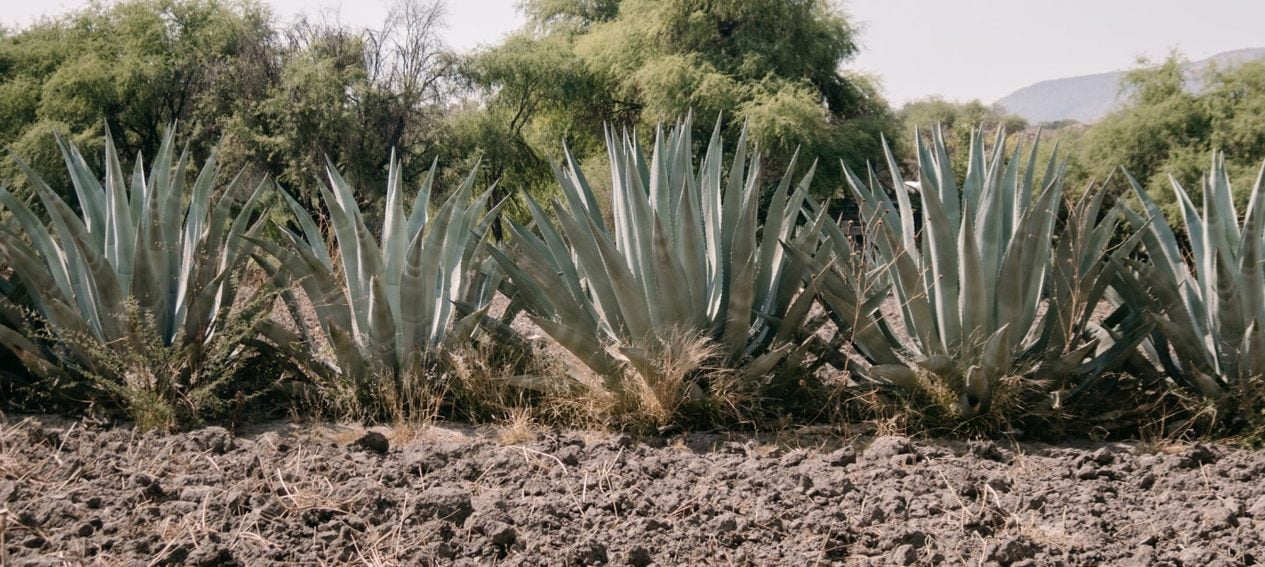
| Scientific Classification | |
|---|---|
| Kingdom: | Plantae |
| Clade: | Tracheophytes |
| Clade: | Angiosperms |
| Clade: | Eudicots |
| Order: | Caryophyllales |
| Family: | Cactaceae |
| Subfamily: | Cactoideae |
| Genus: | Leuchtenbergia |
| Species: | L. principis |
| Binomial name: | Leuchtenbergia principis Hook. |
Agave cactus is a unique plant that is often mistaken for a cactus due to its spiny and swollen appearance. However, it actually belongs to the Cactaceae family, which includes various other plants like ocotillos and aloes.
One common species of agave found in Arizona is Agave palmeri, which can be seen in southeastern Arizona, southwestern New Mexico, Chihuahua, and Sonora in Mexico. These plants have flattened, globular leaves that grow radially from a base, forming a plant that can reach about 12 inches tall and 16 inches wide.
It’s interesting to note that agave plants tend to exhibit faster growth when cultivated in landscapes compared to their natural habitat.
Arizona Cactus Diagram – Famous to Lesser

Unique Features and Importance of Arizona Cacti
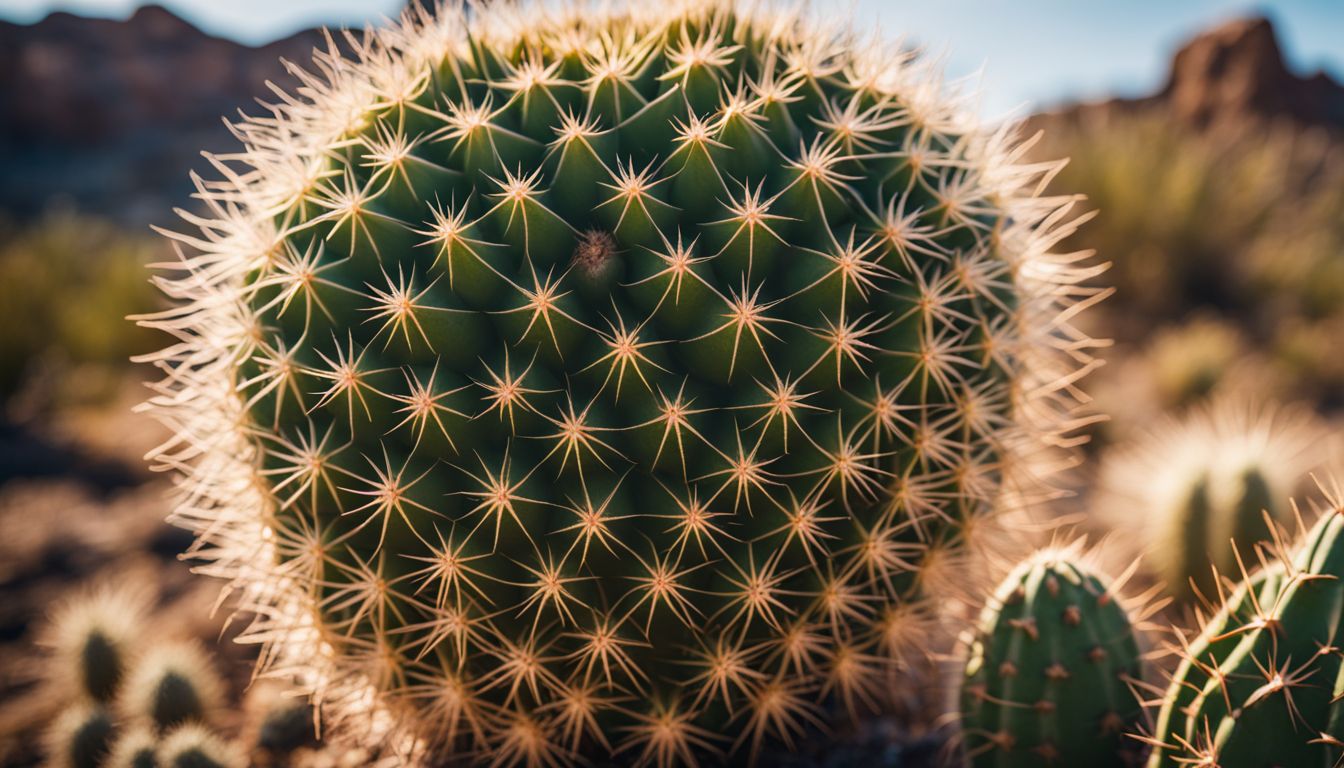
Arizona cacti have unique features that allow them to thrive in the desert environment, such as their impressive adaptability to extreme temperatures and ability to store water. These cacti also play a crucial role in the ecosystem by providing shelter and food for various animals, as well as contributing to pollination and seed dispersal.
Adaptations to desert environment
Cacti in the Sonoran Desert, like the saguaro cactus, have special adaptations that help them survive in harsh desert conditions. They have roots close to the surface of the soil so they can quickly absorb water after rainfalls.
Their spines protect them from being eaten by animals and also provide shade during hot days. Cacti also have a waxy coating on their skin called a cuticle, which helps prevent water loss.
Some cacti even store water inside their stems, allowing them to survive for long periods without rainfall. These adaptations allow cacti to thrive in arid environments where other plants struggle to survive.
Impressive size and longevity
Cactus found in Arizona can grow to be impressively tall. The saguaro cactus, for example, can reach over 40 feet in height! These towering giants are the largest cacti species in North America.
And that’s not all—they have an amazing lifespan too! On average, a saguaro cactus can live between 100 to 200 years. Some of them even exceed 150 years! It takes about 10 years for a saguaro cactus to grow just one inch in height.
The cactus is plant that cant withstand thousands of years.
Isn’t that incredible? So if you ever visit Arizona, make sure to marvel at these impressive cacti and appreciate their long lives.
Vibrant flowers and fruits
The cacti found in Arizona are known for their vibrant flowers and fruits. One of the most famous cacti, the Saguaro cactus, produces beautiful white flowers in the late spring and red fruit in the summer.
These colorful blooms add to the overall unique and attractive features of Arizona’s cacti. The flowering plants and cacti contribute to the beauty and diversity of Arizona’s deserts, making them a sight to behold.
Ecological and cultural significance
Arizona cacti, especially the majestic saguaro cactus, have both ecological and cultural significance. The saguaro cactus is vital to the desert ecosystem, as it provides homes for various animals and birds, such as the endangered Gila woodpecker and elf owl.
It also plays a crucial role in pollination and seed dispersal. Additionally, Native American tribes have a deep connection to Arizona cacti, using them for food, medicine, and important ceremonial purposes.
In fact, the saguaro blossom is even recognized as the state wildflower of Arizona. These unique cacti contribute to the overall biodiversity and balance of the Sonoran Desert in Arizona.
Where to See Arizona Cacti
If you’re eager to catch a glimpse of these stunning plants up close, we’ve got you covered! From the majestic Saguaro National Park to the breathtaking Desert Botanical Garden, Arizona offers plenty of opportunities to see these unique cacti in their natural habitat.
Don’t miss out on this prickly adventure – read more to find out where else you can spot Arizona’s fascinating cactus species!
Saguaro National Park
Saguaro National Park is where you can find the giant saguaro cactus, which is the largest cactus species in the United States. This park is located in Tucson, Arizona and has two districts: Saguaro West and Saguaro East.
The main purpose of this park is to protect and conserve the saguaro cactus, which only grows in the Sonoran Desert region of southern Arizona. When you visit Saguaro National Park, you can enjoy activities like hiking on scenic trails, driving through beautiful landscapes, taking guided tours, and spotting wildlife.
It’s also a great place to see a variety of succulent plants and cacti species, with the saguaro cactus being the most famous one because it’s tall and iconic.
Desert Botanical Garden
At Desert Botanical Garden, you can discover more than 50,000 plants, including over 250 types of succulents and cacti. This incredible garden was established in 1939 by the Arizona Cactus and Native Flora Society.
It is the perfect place to admire and learn about the iconic saguaro cactus, which only grows in the Sonoran Desert of southern Arizona. Whether you’re a plant lover or just curious about Arizona’s native flora, Desert Botanical Garden is a must-visit destination.
Not only does it provide education and conservation efforts for these unique plants, but it also allows visitors to appreciate their beauty up close.
Organ Pipe Cactus National Monument
The Organ Pipe Cactus National Monument is an amazing place to see different types of cacti in Arizona. Located in extreme southern Arizona, it shares a border with Mexico. This national monument and UNESCO biosphere reserve is home to 31 species of cacti, including the unique organ pipe cactus, also known as Lemaireocereus.
It’s native to the Sonoran Desert in southwest Arizona. When you visit this monument, you can explore and experience these diverse cacti species in their natural habitat.
Boyce Thompson Arboretum State Park
Boyce Thompson Arboretum State Park is Arizona’s oldest and largest botanical garden. It covers 392 acres of land along Queen Creek. The Cactus and Succulent Garden within the arboretum is home to over 300 species of cacti and succulents.
Visitors can see saguaros, prickly pears, twisted chollas, and barrel cacti in the garden. The arboretum has over 3,900 species of plants on display.
Tonto National Forest
When you visit Arizona, one of the best places to see a variety of cacti is the Tonto National Forest. This beautiful forest showcases a diverse range of cacti and desert succulents that are native to Arizona.
One of the most iconic cactus species found here is the saguaro cactus, which contributes to the distinctive landscape of this national forest. In addition to saguaros, you can also find other types of cacti like barrel cactus, prickly pear cactus, cholla cactus, and many more.
So if you’re curious about exploring different types of cacti in their natural habitat, make sure to include Tonto National Forest on your itinerary when visiting Arizona!
(Include additional locations where cacti can be seen in Arizona)
We can find cacti in various other locations across Arizona. For instance, Pima County has the highest number of cactus species in the state, making it a great place to explore and see different types of cacti.
On the other hand, Greenlee County has fewer cactus species compared to other areas but still offers opportunities to spot these unique desert plants. So if you’re looking to see more cacti in Arizona, don’t forget to check out these additional locations!
In recent news the iconic Saguaro cactus can’t withstand in record breaking above 110 degrees fahrenheit.
Threats to Arizona Cacti and Conservation Efforts
Arizona cacti face multiple threats, including climate change, habitat destruction, and illegal collection. Conservation efforts are being made to protect these unique plants and their ecosystems.
Climate change
Climate change is a big problem for cacti in Arizona. Rising temperatures and drought are making it hard for them to survive. The heat waves and dry conditions put the giant saguaros at risk of falling over.
Invasive grass species are also taking up water that cacti need to survive. A study found that 60 percent of cactus species could be extinct by the middle of the century because of climate change.
It’s important for us to take action and protect these amazing plants from the effects of global warming.
Habitat destruction
Habitat destruction is a big problem for cacti in Arizona. It means that the places where they live are being destroyed or changed, which can make it hard for them to survive. For example, urbanization and invasive species like buffelgrass are causing habitat loss and fragmentation for the cactus ferruginous pygmy-owl, a threatened species of cactus.
The saguaro cactus also faces threats from vandalism, attempted transplant, and theft. Another endangered cactus, the Fickeisen plains cactus, is at risk because of habitat destruction, modification, and degradation.
Protecting their habitats is really important to help these amazing plants survive.
Illegal collection
Illegal collection is a serious issue that is putting many cacti species in Arizona at risk of extinction. Sadly, 31 percent of the world’s cactus species are in danger because of this illegal activity.
The saguaro cactus, in particular, faces threats like vandalism, theft, and attempts to transplant them without permission. It’s important to remember that cutting down a saguaro cactus without proper permission and permits is against the law.
Even rare and endangered cacti found in the wild are often taken by people for personal collections or to sell. This illegal collection poses a significant threat to the survival of these unique plants.
Conservation initiatives
Conservation initiatives are vital in protecting the cacti species found in Arizona. Collaborative efforts have been made to address the threats these cacti face and preserve their habitats.
This includes working together with organizations in Texas and Mexico to protect not only the cactus species, but also other endangered wildlife like the pygmy-owl. By taking action, we can prevent the extinction of these unique plants and maintain the biodiversity of Arizona’s ecosystems.
Include additional threats and conservation efforts for Arizona cacti
Cacti in Arizona face various threats that put their survival at risk. One of the biggest challenges is climate change, which affects arid and semi-arid regions like Arizona. Rising temperatures and changes in precipitation patterns can disrupt cactus habitats and make it harder for them to survive.
Habitat destruction is another threat, as urban development and land clearing reduce the suitable areas for cacti to grow. Illegal collection by poachers is also a significant concern, with some vulnerable species being targeted for their rarity or unique characteristics.
To protect Arizona’s cacti, conservation efforts involve collaboration with various stakeholders, including researchers, land managers, and local communities. Conservation initiatives aim to raise awareness about the importance of preserving these iconic plants and implement measures to safeguard their habitats from further degradation.
Fun Facts about Arizona Cacti
Arizona cacti hold many fascinating facts, from being the world’s largest cactus species to serving as the state flower of Arizona. The Sonoran Desert is teeming with biodiversity and has a rich history of using cacti for various purposes.
These remarkable plants have adapted into incredible survival abilities to thrive in harsh desert conditions, making them truly awe-inspiring.
World’s largest cactus species
The saguaro cactus is the largest cactus species in the United States. It can grow over 40 feet tall! In fact, the tallest recorded saguaro cactus was a whopping 78 feet tall. These giant cacti have a shallow root system that helps them absorb water quickly during desert rainstorms.
They play an important role in providing habitat for various desert species, including birds and small mammals. The saguaro cactus is truly an impressive sight to see in Arizona’s Sonoran Desert.
State flower of Arizona
The state flower of Arizona is the white blossom of the saguaro cactus. This towering cactus, also known as Carnegiea gigantea, is the largest species of cactus in the United States.
It can only be found in the Sonoran Desert in southern Arizona. Slow Growing up to 12 meters (40 feet) tall, the saguaro cactus produces red fruits that are not only edible but have also been traditionally harvested by Indigenous peoples in Arizona.
Its striking white flowers make it a beautiful symbol of the desert landscape in this southwestern state.
Biodiversity in the Sonoran Desert
The Sonoran Desert is a special place that is known for its incredible biodiversity. It is home to around 50 different types of cactus species, making it a haven for cacti enthusiasts.
One of the most famous cacti found here is the saguaro cactus, which can grow to astonishing heights of over 12 meters (40 feet). But it’s not just the saguaro that calls this desert home.
The Sonoran Desert boasts a unique combination of desert, mountain, and riparian ecosystems, creating a diverse habitat for many plants and animals. From reptiles and birds to mammals and insects, there are countless species that rely on the cacti and other desert plants for their survival.
Historical and cultural uses
The saguaro cactus holds great historical and cultural significance. It is an iconic symbol in both Mexican and Arizonan culture. You can often see it depicted in art, movies, and other forms of media that represent the American Southwest.
For the Tohono O’odham people, a native group in Arizona, the saguaro cactus is considered sacred. They have traditional uses for its fruits, fiber, and wood. This deep connection to the saguaro cactus reflects the rich history and cultural heritage of Arizona’s indigenous communities.
Survival abilities in harsh conditions
Arizona cacti are incredibly resilient and have developed remarkable survival abilities to endure the harsh conditions of the desert. One such cactus is the saguaro, which can hold and store water in its stems during periods of drought.
This allows them to survive without rainfall for long periods of time. They also have sharp spines that protect them from animals and help reduce water loss through transpiration. Additionally, some cacti in Arizona have a special relationship with mesquite trees, as their seedlings thrive under the shade of these trees’ canopies.
These adaptive strategies enable Arizona cacti to not only survive but thrive in the challenging desert environment they call home.
(Include additional fun facts about Arizona cacti)
Arizona is home to an incredible variety of cacti. Did you know that the saguaro cactus, found in the Sonoran Desert, can grow over 40 feet tall? It’s the largest cactus species in the United States! Another interesting fact is that it can take up to 70 years for a saguaro to grow limbs.
Arizona also has other fascinating cacti like barrel cactus, cholla, and pincushion cactus. With over 50 species of cacti in Arizona, there’s always something new to learn about these amazing desert plants!
Conclusion
In conclusion, Arizona is a haven for cactus enthusiasts, with over 50 unique species to discover. From the towering saguaro to the vibrant prickly pear, these resilient plants thrive in the desert landscape.
Their impressive adaptations and cultural significance make them fascinating and important elements of Arizona’s natural heritage. So if you’re ever in Arizona, be sure to explore the amazing world of cacti that this state has to offer!
FAQs
1. What is a unique cactus found in Arizona?
A unique cactus found in Arizona is the Saguaro. It can live for 150 to 200 years and grow as tall as a tree when fully hydrated.
2. Are there more types of cacti in Arizona?
Yes, there are about 51 species of cacti in Arizona, including columnar cacti and others that endure scorching heat.
3. Where else can these types of cacti be found?
Apart from Arizona, they can also be found in northern Mexico, southeastern California and the Four Corners region.
4. Do all these cactuses bloom flowers?
Yes! Many have beautiful flowers that bloom – some even have spines and yellowish-green flowers!
5. How does the desert’s warmth affect these types of cactsus?
The high average temperature may make it tough for them but most survive by opening their pores to get rid of retained water and take in carbon dioxide at night.
6. Can people see this type of Sonoran Desert landscape somewhere else?
This kind of desert landscape with plentiful Saguaros also extends into parts like Las Vegas and Phoenix which face similar climate conditions during summer.
